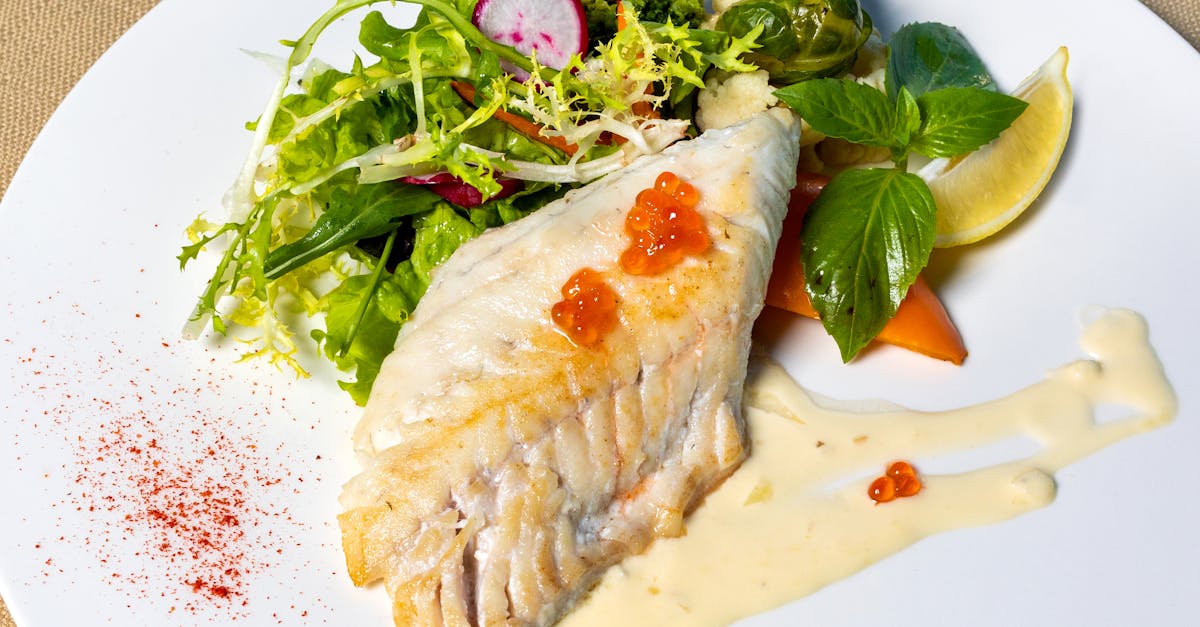10 tips for choosing sustainable frozen seafood

Supporting Local Fisheries
Local fisheries play a vital role in promoting sustainable seafood practices. By purchasing from these sources, consumers can help support community economies and ensure that fishing methods remain environmentally responsible. Sustainable fishing practices from local fisheries often lead to healthier marine ecosystems, contributing to the overall wellbeing of the ocean.
Engaging with local fisheries allows consumers to have a closer connection to their food. This connection fosters a greater appreciation for the harvest and the efforts undertaken to maintain fish populations. Knowing where seafood comes from not only empowers consumers to make informed choices but also helps them advocate for the protection of local marine habitats.
Benefits of Purchasing Locally
Choosing seafood from local fisheries can significantly reduce the environmental impact associated with transportation. Seafood that travels shorter distances often requires less fuel for shipping, which in turn lowers carbon emissions. Additionally, local sources tend to be more in tune with sustainable fishing practices, supporting the health of the marine ecosystem.
Purchasing from local fisheries also fosters community relationships and provides economic benefits to the area. Local fishermen often rely on the support of their communities to sustain their livelihoods, and in turn, consumers can enjoy fresher products with known origins. Engaging with local suppliers creates a more transparent food system, allowing buyers to trace their seafood back to its source.
Assessing Packaging Impact
The environmental impact of packaging is a crucial factor to consider when selecting frozen seafood. Many packaging materials contribute significantly to waste and pollution. Plastic is prevalent in the frozen food industry, and its degradation in the environment can take hundreds of years. Eco-friendly alternatives like recycled cardboard or biodegradable materials help reduce this environmental footprint. Consumers must scrutinise the packaging to ensure it aligns with sustainable practices.
In addition to the material itself, the design and amount of packaging play a vital role. Excessive packaging not only leads to more waste but can also indicate a product that may not prioritise sustainability. Look for brands that utilise minimal packaging without compromising product quality. Transparent labels that indicate the type of materials used can guide informed decisions, ensuring that your purchase supports environmental responsibility in the seafood industry.
Sustainable Packaging Options
When selecting frozen seafood, it is crucial to consider the sustainability of its packaging. Many brands now offer products in recyclable or biodegradable materials. Opting for seafood packaged in such eco-friendly options reduces waste and minimises the environmental impact of plastic pollution. This conscious choice not only demonstrates a commitment to sustainability but also encourages manufacturers to adopt better practices.
Another effective way to support sustainable packaging is by looking for seafood that uses minimal or no plastic. Innovative alternatives are being introduced, such as compostable cartons or pouches that maintain freshness without relying on harmful materials. By prioritising these sustainable methods, consumers can play a pivotal role in fostering a more environmentally responsible seafood market.
Learning About Seasonal Availability
Understanding the seasonal patterns of seafood can significantly impact your choice for sustainability. Different species thrive in various months throughout the year, and being aware of these timelines can aid in making responsible purchasing decisions. Consuming seafood that is in season not only supports local fishing communities but also ensures that the fish are caught at their peak quality, contributing to a better dining experience. Knowledge of seasonal availability helps consumers avoid species that may be overfished or at risk of depletion.
Furthermore, purchasing seafood during its natural breeding cycle aligns with environmental preservation efforts. Many fisheries promote seasonal harvesting to allow fish populations to replenish adequately. This approach negates the harmful effects of overfishing and maintains ecological balance. By choosing seafood that is currently in season, individuals can contribute to the longevity of marine ecosystems while also enjoying fresh, flavourful options on their plates.
Choosing Seafood in Season
Selecting seafood that is in season significantly contributes to sustainable fishing practices. Certain species have specific spawning and feeding patterns that fluctuate throughout the year. By choosing seafood that is naturally abundant during a particular season, consumers can help alleviate pressure on overfished populations and promote ecological balance.
Understanding seasonal availability can also lead to a fresher dining experience. Seafood caught during its peak season tends to have better flavour and texture than those out of season. Supporting seasonal selections not only aligns gastronomic choices with responsible sourcing but also encourages local fisheries to maintain sustainable practices that protect marine ecosystems.
FAQS
Why is it important to support local fisheries when choosing frozen seafood?
Supporting local fisheries helps to sustain local economies, reduces the carbon footprint associated with transportation, and promotes responsible fishing practices that protect marine ecosystems.
What are some benefits of purchasing seafood locally?
Purchasing seafood locally often ensures fresher products, supports community livelihoods, and can have a positive impact on local environmental practices due to the shorter supply chain.
How can I assess the packaging impact of frozen seafood?
Look for information on the packaging materials used, their recyclability, and any certifications indicating sustainable practices. Avoid excessive plastic and opt for products with eco-friendly packaging.
What are sustainable packaging options for frozen seafood?
Sustainable packaging options include biodegradable materials, recyclable plastics, and minimal packaging that reduces waste. Brands that use these options often display relevant certifications.
Why should I consider the seasonal availability of seafood?
Choosing seafood that is in season helps to ensure that you are consuming products that are abundant and less likely to be overfished, promoting sustainable fishing practices and supporting healthier marine ecosystems.
Related Links
Review of seafood certifications for frozen haddockWhat are the main factors affecting haddock migration patterns
Roundup of best practices in haddock fishing